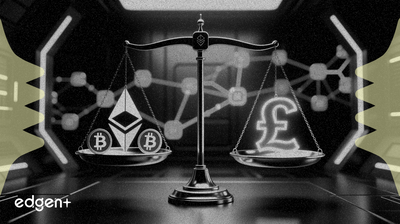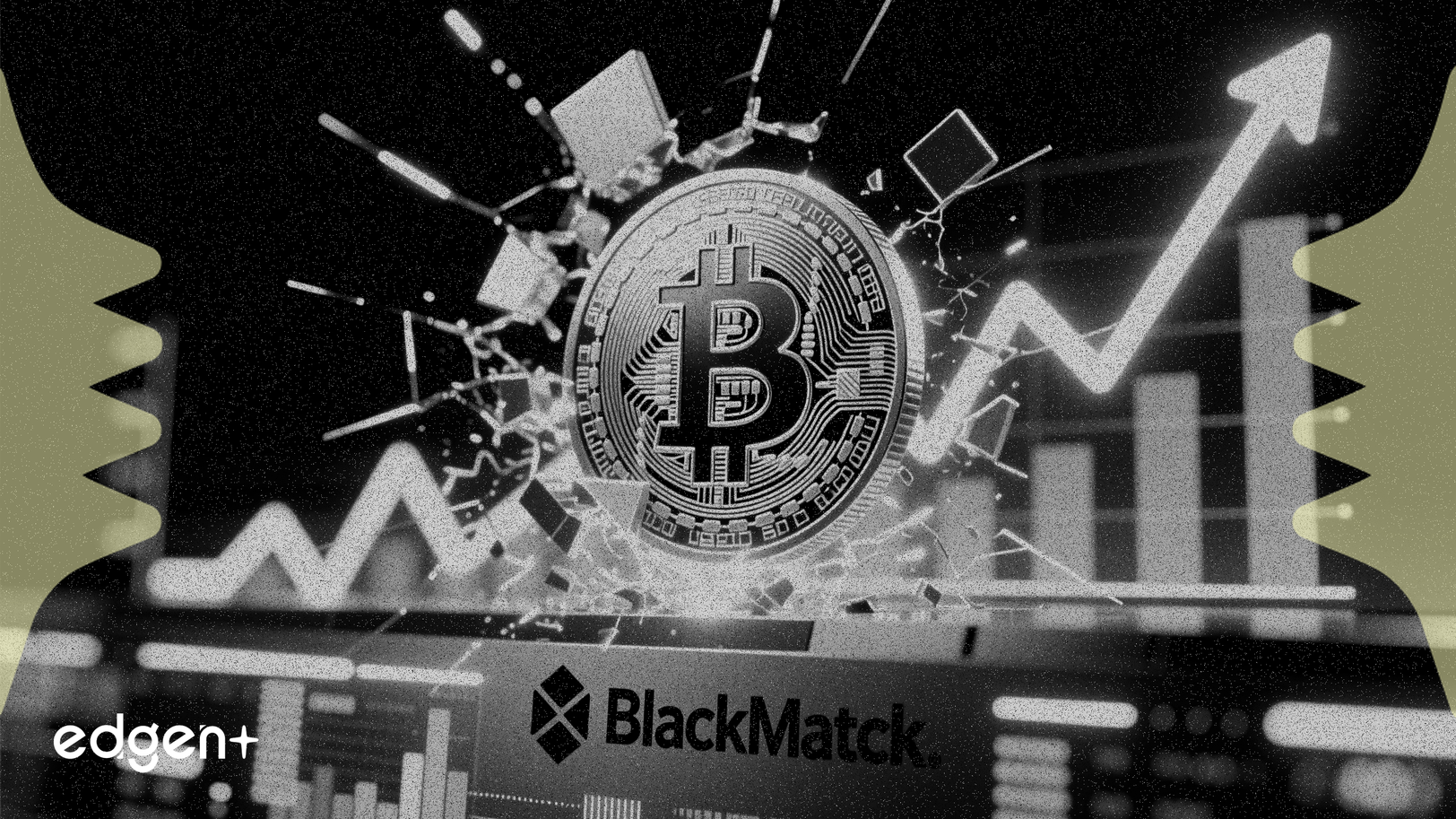Related News

UK Proposes 'No Gain, No Loss' Tax Deferral for DeFi Activities
## Executive Summary The United Kingdom's government has released a proposal to implement a "no gain, no loss" tax framework for specific Decentralized Finance (DeFi) transactions. The proposed rules, which target crypto-asset lending and liquidity pool provisions, would defer the capital gains tax (CGT) event until the assets are economically disposed of. This initiative represents a significant potential shift from the current guidance, which often triggers a taxable event upon the transfer of assets into a DeFi protocol. The measure is designed to reduce the administrative complexity and tax burden on users, potentially fostering greater DeFi adoption and solidifying the UK's position as a crypto-friendly jurisdiction. ## The Event in Detail Under the current guidance from **His Majesty's Revenue and Customs (HMRC)**, when a user transfers crypto assets into a DeFi lending or liquidity protocol, it is often treated as a "disposal." This means the user is liable for Capital Gains Tax on any appreciation in the asset's value at the time of the transfer, even if no profit has been realized in fiat currency. This interpretation has been a major point of friction for the UK's crypto industry, creating tax liabilities that do not reflect an investor's actual economic position and imposing a heavy compliance burden. The new proposal seeks to rectify this by treating the transfer of crypto assets into a lending or liquidity pool arrangement as a non-event for tax purposes. A CGT event would only be triggered upon the final "economic disposal" of the assets, such as selling them for fiat currency. This aligns the tax treatment of these DeFi activities with their underlying economic substance, where the user retains a form of ownership or claim on the underlying assets. ## Financial Mechanics of the Proposal The core of the proposal is the deferral of the CGT liability. To illustrate, consider an investor who acquired 1 ETH for £1,000. If they later deposit that ETH into a liquidity pool when its market value is £2,500, current **HMRC** rules could trigger an immediate CGT liability on the £1,500 gain. The investor would have to pay tax on this "phantom" gain, despite not having sold the asset. Under the proposed "no gain, no loss" system, this £1,500 gain would not be taxed at the point of deposit. The tax liability would be deferred until the investor withdraws their assets from the pool and subsequently sells them. This method prevents tax events from occurring during the intermediate steps of DeFi participation, significantly simplifying tax calculations and improving cash flow for investors. ## Market Implications The proposal is widely viewed as a bullish development for the UK's DeFi ecosystem. By lowering the barrier to entry and reducing the tax complexity associated with participating in DeFi, the new rules are expected to encourage greater adoption among both retail and institutional investors. This regulatory clarity could make the UK a more competitive and attractive hub for DeFi projects and developers, who have previously been deterred by the ambiguous and often punitive tax environment. Industry bodies and participants have lauded the proposal as a "major win" that reflects a more nuanced understanding of DeFi from UK policymakers. ## Broader Context and Global Regulatory Trends The UK's proposed approach places it in the context of a global conversation about how to regulate and tax the nascent DeFi sector. In the United States, for instance, the crypto industry has been actively pushing back against broad IRS proposals that could impose significant reporting burdens on DeFi participants. The UK's move signals a proactive effort to create a bespoke regulatory framework that supports innovation while ensuring tax compliance. This could set a precedent for other jurisdictions grappling with how to adapt traditional tax principles to the novel structures of decentralized finance, potentially influencing the direction of global crypto regulation.

Kaspa (KAS) Surges Over 17% While MemeCore (M) Plummets by 31% in Volatile Trading
## Executive Summary In a display of significant market volatility, **Kaspa (KAS)** and **MemeCore (M)**, two tokens within the top 100 cryptocurrencies by market capitalization, demonstrated sharply divergent trajectories. Kaspa experienced a substantial price surge of over 17%, while MemeCore recorded a steep decline of more than 31%. These movements occurred on significant trading volumes, indicating strong investor activity behind both the rally and the sell-off. ## The Event in Detail **Kaspa (KAS)** exhibited strong bullish momentum, with its price climbing between 17.54% and 25% to reach approximately $0.0607. This price increase was supported by a 24-hour trading volume of approximately $119 million. Market analysis suggests the rally is underpinned by positive technical indicators, such as the MACD and AO, signaling a potential breakout despite what is described as a fearful broader market. Conversely, **MemeCore (M)** underwent a severe price correction, falling by over 31% to a price of $1.25. The token registered a 24-hour trading volume of over $42 million. This precipitous drop is particularly notable as it follows a recent period of positive performance, during which the token achieved a record high of $1.97, illustrating the high-risk, high-volatility nature of memecoins. ## Market Implications The dramatic and opposing price actions of KAS and M highlight the fragmented nature of the current altcoin market. M's sharp downturn after reaching a peak serves as a case study in the rapid sentiment shifts that can affect assets in the memecoin category. The capital rotation out of such assets can be as swift as the initial speculative inflow. In contrast, Kaspa's ability to rally against a backdrop of general market fear suggests that investors may be prioritizing projects with perceived stronger fundamentals or unique technological propositions. The reported bullish signals from technical analysis indicate that this move may be driven by more than just speculative fervor, potentially attracting capital from traders looking for assets with positive momentum. ## Broader Context This event underscores a key characteristic of the cryptocurrency market: the performance of individual digital assets can become significantly decoupled from the movements of major cryptocurrencies like Bitcoin and Ethereum. The divergence between a utility-focused project like **Kaspa** and a memecoin like **MemeCore** points to a maturing, albeit still speculative, market where investors are making distinct choices based on asset class and risk appetite. The incident serves as a clear illustration of the inherent risks associated with memecoins, which are highly susceptible to sentiment-driven volatility and rapid price collapses. For Kaspa, its counter-trend rally could signal growing investor confidence, potentially positioning it as a more resilient asset in a market that is otherwise characterized by uncertainty.

Prediction Market Volume Surpasses $2 Billion Weekly as Neutrl Introduces New Yield Strategies
## Executive Summary Prediction markets have achieved a record weekly trading volume exceeding $2 billion, a milestone driven by the escalating activity on platforms like **Polymarket** and the U.S.-regulated **Kalshi**. This surge is underpinned by increasing mainstream adoption, the growing popularity of sports betting on regulated exchanges, and significant institutional capital inflows, highlighted by a $2 billion investment in **Polymarket** from **Intercontinental Exchange (ICE)**, the parent company of the New York Stock Exchange. Concurrently, the ecosystem is evolving with the introduction of sophisticated financial strategies. Platforms such as **Neutrl** are developing novel yield-generation opportunities, including delta-neutral arbitrage, signaling a maturation of the market beyond simple speculation. ## The Event in Detail According to data from **Dune Analytics**, the weekly trading volume for prediction markets surpassed the $2 billion mark for the first time, establishing a new record. The two dominant platforms, **Polymarket** and **Kalshi**, have been central to this expansion. **Kalshi**, the first federally regulated prediction market in the United States, has captured a significant user base through sports betting, with football-related markets reportedly accounting for over 70% of its trading volume. Meanwhile, **Polymarket** has demonstrated significant institutional appeal, securing a major investment from **ICE** and reportedly exploring a new funding round at a valuation approaching $15 billion. This dual-pronged growth—from both retail-focused sports betting and high-finance institutional investment—illustrates the sector's broadening appeal. ## Deconstructing the Financial Mechanics The emergence of platforms like **Neutrl** indicates a growing sophistication within the prediction market ecosystem. **Neutrl** aims to unlock what it terms "overlooked yield opportunities" by employing strategies analogous to delta-neutral hedging. One such advanced strategy is **negative funding rate arbitrage**. In perpetual futures markets, a negative funding rate occurs when traders who are short an asset pay a premium to those who are long. An arbitrageur can simultaneously buy the underlying asset in the spot market and short it in the futures market. This delta-neutral position is insulated from price movements, allowing the trader to collect the funding rate payments as profit. Historical data from similar strategies over the past two years indicate that negative funding rate arbitrage has generated returns exceeding 70%, significantly outperforming more conventional positive funding rate strategies. ## Market Implications The surge in volume and the introduction of complex financial instruments carry several implications for the broader market. The significant investment by **ICE** in **Polymarket** lends a new layer of institutional legitimacy to the crypto-native prediction market space, potentially paving the way for further integration with traditional finance. Furthermore, the rise of platforms like **Neutrl** introduces hedge-fund-style strategies to a wider audience, offering new sources of yield that are uncorrelated with directional market movements. This could attract a new class of investors focused on quantitative strategies rather than simple speculation, thereby increasing market depth and liquidity. ## Broader Context The explosive growth of prediction markets is part of a larger trend of speculative interest seen across various asset classes, including equities and sports betting. The regulatory clarity achieved by **Kalshi** in the U.S. has been a critical catalyst, allowing it to tap into the lucrative sports betting market and directly compete with traditional betting platforms. This convergence of financial markets, technology, and regulated gambling suggests a future where the lines between investing, hedging, and betting continue to blur. The ability of these platforms to attract both retail users and institutional giants like **ICE** positions the prediction market sector for sustained growth and innovation.
